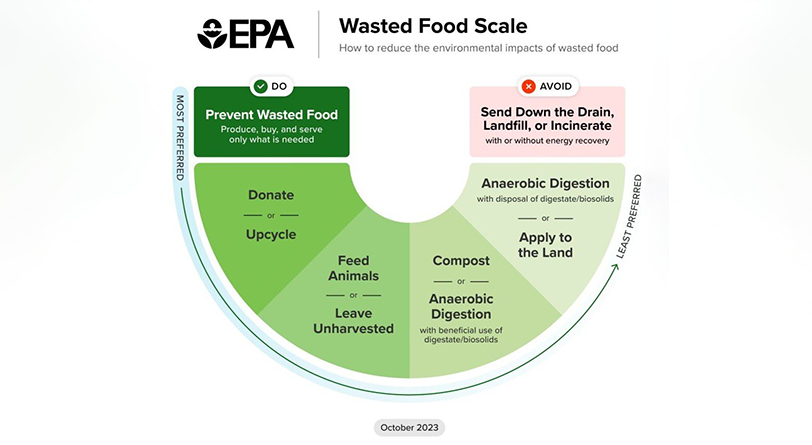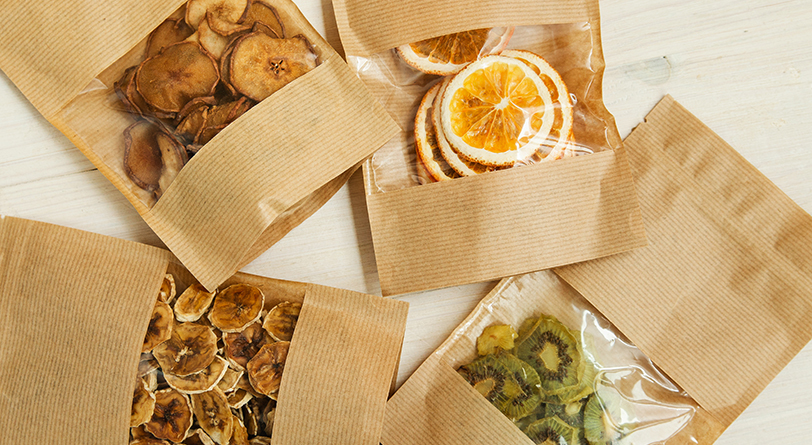If food waste were a country, it would rank third in environmental impact behind the United States and China. Preventing food waste is a primary strategy for mitigating the environmental consequences of our food system. From farm to fork, the food system is responsible for 26% of all greenhouse gas emissions.
In contrast, from the extraction of basic materials like oil to the final converting operations, flexible food packaging accounts for less than 2.2% of all greenhouse gas emissions. Improved packaging could prevent more than 1 million tons of food waste and 6 million metric tons of greenhouse gas emissions annually, according to ReFED.com, a U.S.-based nonprofit focused on the issue of food waste. Many of these technologies and solutions can only be achieved with flexible packaging, and we need more flexible packaging to prevent food waste.
Technologies based on science and design show how flexible packaging can help. We used standardized data from ReFED to determine the annual dollar impact on food waste so that the process is repeatable and U.S.-focused. Additional details along with the systems approach can be found in the full report titled “The Role for Flexible Packaging in Reducing Food Waste: Organizations, Goals, Case Studies, Insights, and Opportunities for Flexible Packaging.” The report is available through the Flexible Packaging Association (FPA).
Eight Science-Based Technologies
There are eight science-based technologies that apply to flexible packaging to prevent food waste:
- Improved water vapor barrier, $1.06 billion annual impact: Flexible packaging advanced water vapor barriers contribute to microbial control and texture preservation.
- Antimicrobial packaging, $1.05 billion annual impact: Antimicrobial packaging has been in use since the 1980s. Commercial applications such as Aptar and CoppTech are advancing.
- Modified atmosphere packaging, $987.9 million annual impact: Modified atmosphere packaging inhibits the oxidation or degradation of a product, but it can also prevent microbial growth if the oxygen level remains low. Flexible barriers are tailored to retain different atmospheres within the package using micro-perforations and for primary and secondary packaging.
- Sensors, $803.1 million annual impact: Sensors embedded in packaging detect microbial growth and indicate if food remains safe.
- Hydrogels, $760.3 million annual impact: Hydrogels store compounds within the flexible film and can be released if the shelf life reaches a pre-defined time.
- Improved light barrier, $590.7 million annual impact: Light barriers on flexible packaging inhibit light-induced lipid and amino acid oxidation, which alters product quality and nutrients.
- Vacuum packaging, $577.9 million annual impact: Flexible packaging essentially is required for vacuum packaging. Vacuum packaging is not commonly used with produce packaging because removing oxygen creates an environment for anaerobic glycolysis and subsequent rapid produce degradation.
- Responsive packaging, $191.6 million annual impact: Responsive packaging acts after product safety or quality is lowered and then releases select shelf-life extenders such as antioxidants, preservatives, or moisture absorbers.
Six Design-Based Solutions
These six design-based solutions also apply to flexible packaging to prevent food waste:
- Resealable packaging, $1.1 billion annual impact: Resealable packaging is seen in many forms, including patented zipper options in flexible packaging and lidstock. With resealable designs offering consumers convenience and extending product freshness, there is reduced contamination, moisture loss, and freezer burn.
- Refrigerator packaging case study, $1.09 billion annual impact: Studies have shown that consumers essentially “lose” their food in the refrigerator, resulting in food spoilage. Flexible packaging design can prevent this waste.
- Flex pack case study, $910.7 million annual impact: Reducing headspace—the empty space in packaging—reduces exposure to oxygen, thus reducing oxidation and limiting moisture loss or gain, which can retain product quality and inhibit freezer burn. Flexible packaging allows for this elimination of headspace as the product is consumed.
- Packaged multi-ingredient meal, $347.7 million annual impact: Prepackaged multi-ingredient meal solutions such as HelloFresh and Blue Apron prevent food waste from portioning.
- Beta packaging, $72.1 million annual impact: Beta packaging involves altering or enhancing food products within the packaging itself before consumption.
- Federal Food Donation Improvement Act in 2023: This allows for more donations and less risk. Flexible packaging enables more efficient storage and transfer of food.
Systems Approach
Linking the environmental impact of our food system to the packaging used to protect it is paramount so the impact of each can be compared. The excellent news for flexible packaging is that from a global perspective, this linkage now exists in the United Nations Sustainable Development Goal Target 12.3.
Consumers, retailers, brands, and government organizations have aligned more sustainable food systems. In October 2023, the U.S. Environmental Protection Agency’s perspective on food waste recovery shifted to a more systems approach focused on prevention. The current Wasted Food Scale above illustrates that preventing food waste significantly impacts sustainable food systems and is the most effective use of packaging.

A way to achieve a systems approach is by engaging with select organizations, including FPA, ReFED, the Food Waste Reduction Alliance, U.S. Department of Agriculture, University of Michigan Center for Sustainable Systems, and American Chemistry Council.
SUMMARY
The flexible packaging industry can lead in food waste prevention by applying solutions based on science and design and taking a systems approach. Through these applications, flexible packaging is a valued tool in preventing food waste and reducing greenhouse gas emissions.
Claire Sand is CEO of Packaging Technology and Research LLC, and Todd Bukowski is principal at PTIS LLC.
